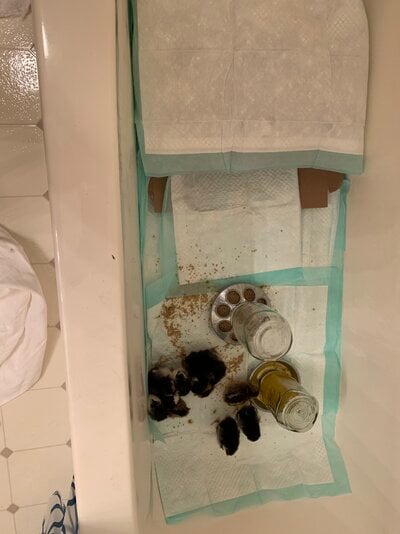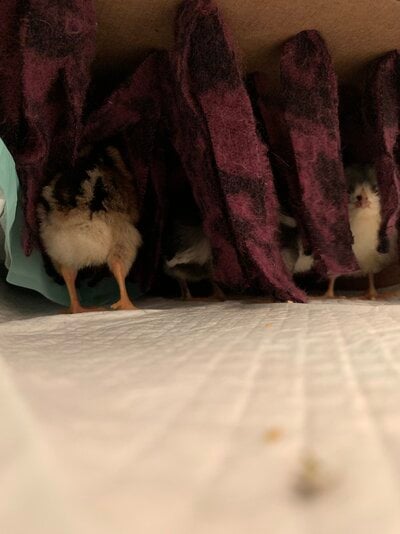I started my wool hen build. I'm finding it harder to decide what to do than I thought it would be. I have a couple few weeks to work on the design and build it.
Goals: to safely brood the chicks in the coop (no electricity). And to approximate a broody hen as much as I can.
Safety (related to the wool hen) looks like enough warmth with enough ventilation. And preventing them from eating anything they shouldn't and from getting tangled in anything or smothered under a pile-up or caught in a corner.
The concept is to use the chicks' body heat as the heat source, trapping that heat close to the chicks with wool and feathers. In the other threads, people talked of using:
Body Frames:
Five gallon pails (upside down)
cat litter boxes (cut in half top to bottom, then laid cut side down)
Milk crates (upside down)
Styrofoam coolers
Wire caves (like for Mama Heating Pads)
Cardboard box
Wooden boxes
Entrances:
cutting doors,
raising the body enough for chicks to go under the edge(s),
using existing holes (handle holes on milk crate)
Details of bodies:
Some bodies need to be covered with cloth or press and seal or insulation to prevent pecking/eating (the styrofoam) or getting trapped (the wire) or losing too much heat (the cardboard box, the wire)
Many said insulation under the chicks is essential:
Styrofoam (lid of the cooler used for the main body; must be covered so they don't eat it)
Bedding
Towels
Wool
Foam board (covered so they don't eat it).
Heat source such as plant grow mats
Some did insulation to top of the main body, also. Same options as under plus feather quilts.
Wool:
Most common was strips of cloth (fleece, usually, or wool).
Most agreed wool cloth is better (warm when damp or wet as other fibers aren't, among other reasons)
Some who used wool used felted sweaters, blankets, coats, skirts
One used raw wool
Yarn also worked, but tangled some even though it was pompommed; sachets of seem safer.
Feather dusters were suggested but not used that I noticed.
Attaching the wool:
Glue to solid surface (came loose)
Tying (knot to make one end too big to fit through a hole)
Tying (various knots used)
credit to
https://www.backyardchickens.com/threads/a-wool-hen-creating-one-today.1133855/
https://www.backyardchickens.com/threads/any-suggestions-for-my-wool-hen-project.1445045/
https://www.backyardchickens.com/threads/wool-hen-but-maybe-snow.1210948/#post-19268255
https://www.backyardchickens.com/th...possibly-no-supplemental-heat-at-all.1126460/
I plan to more references here later
land I'm out of time for now, will work on this more, maybe tonight or tomorrow morning or next week
Goals: to safely brood the chicks in the coop (no electricity). And to approximate a broody hen as much as I can.
Safety (related to the wool hen) looks like enough warmth with enough ventilation. And preventing them from eating anything they shouldn't and from getting tangled in anything or smothered under a pile-up or caught in a corner.
The concept is to use the chicks' body heat as the heat source, trapping that heat close to the chicks with wool and feathers. In the other threads, people talked of using:
Body Frames:
Five gallon pails (upside down)
cat litter boxes (cut in half top to bottom, then laid cut side down)
Milk crates (upside down)
Styrofoam coolers
Wire caves (like for Mama Heating Pads)
Cardboard box
Wooden boxes
Entrances:
cutting doors,
raising the body enough for chicks to go under the edge(s),
using existing holes (handle holes on milk crate)
Details of bodies:
Some bodies need to be covered with cloth or press and seal or insulation to prevent pecking/eating (the styrofoam) or getting trapped (the wire) or losing too much heat (the cardboard box, the wire)
Many said insulation under the chicks is essential:
Styrofoam (lid of the cooler used for the main body; must be covered so they don't eat it)
Bedding
Towels
Wool
Foam board (covered so they don't eat it).
Heat source such as plant grow mats
Some did insulation to top of the main body, also. Same options as under plus feather quilts.
Wool:
Most common was strips of cloth (fleece, usually, or wool).
Most agreed wool cloth is better (warm when damp or wet as other fibers aren't, among other reasons)
Some who used wool used felted sweaters, blankets, coats, skirts
One used raw wool
Yarn also worked, but tangled some even though it was pompommed; sachets of seem safer.
Feather dusters were suggested but not used that I noticed.
Attaching the wool:
Glue to solid surface (came loose)
Tying (knot to make one end too big to fit through a hole)
Tying (various knots used)
credit to
https://www.backyardchickens.com/threads/a-wool-hen-creating-one-today.1133855/
https://www.backyardchickens.com/threads/any-suggestions-for-my-wool-hen-project.1445045/
https://www.backyardchickens.com/threads/wool-hen-but-maybe-snow.1210948/#post-19268255
https://www.backyardchickens.com/th...possibly-no-supplemental-heat-at-all.1126460/
I plan to more references here later
land I'm out of time for now, will work on this more, maybe tonight or tomorrow morning or next week
Last edited:



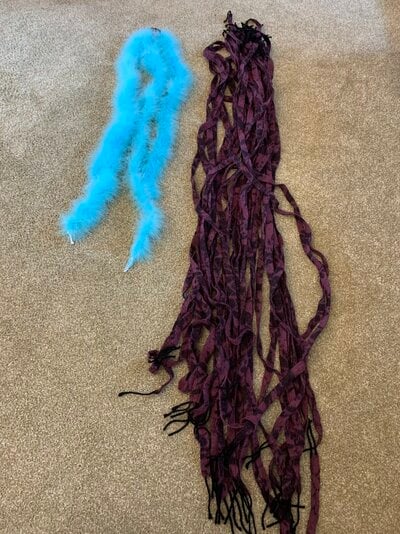
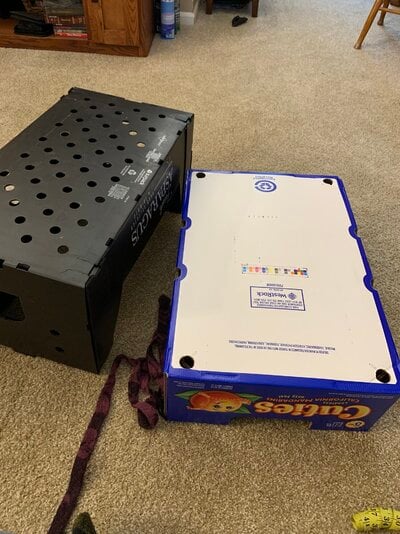
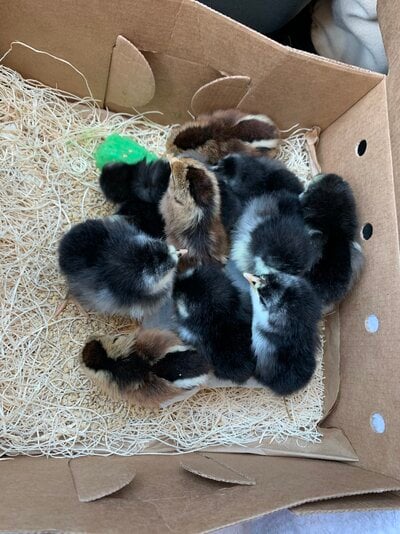
 I'm following this with a lot of interest! Thanks for documenting. And for the picture of cute chicks.
I'm following this with a lot of interest! Thanks for documenting. And for the picture of cute chicks.